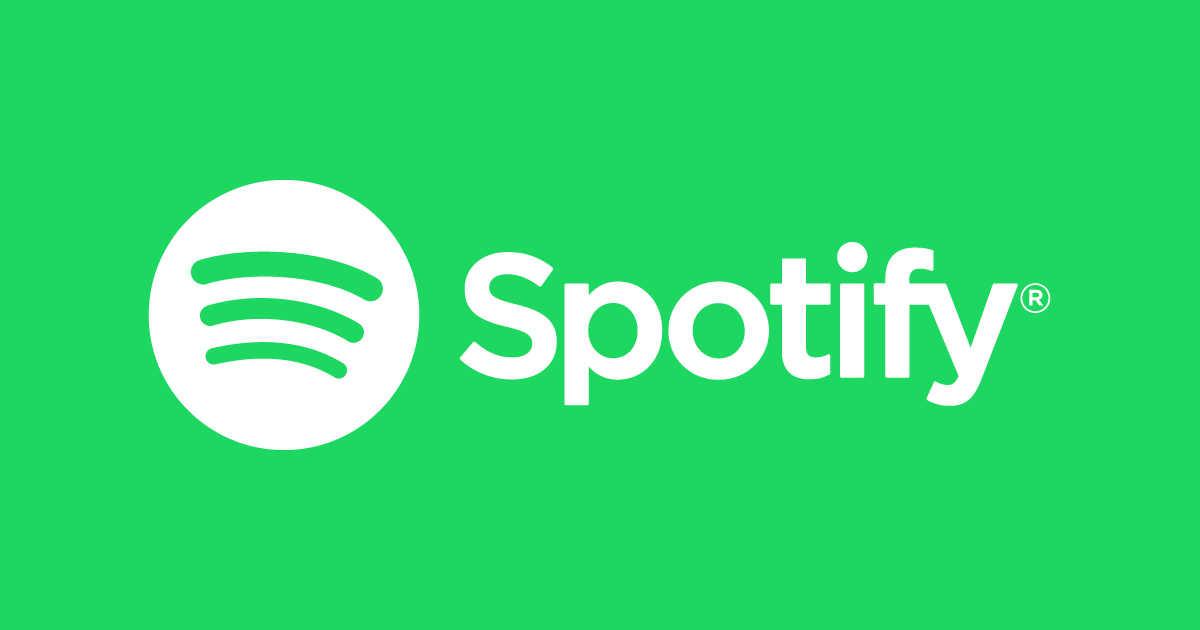Spotify Technology S.A. (SPOT) on Q1 2022 Results - Earnings Call Transcript
Operator: Good morning. My name is Julian and I will be your conference operator today. At this time, I would like to welcome everyone to Spotify’s Q1 2022 Earnings Conference Call and Webcast. Bryan Goldberg, Head of Investor Relations, you may begin your conference. Bryan Goldberg: Thanks, operator and welcome to Spotify’s first quarter 2022 earnings conference call. Joining us today will be Daniel Ek, our CEO and Paul Vogel, our CFO. We will start with opening comments from Daniel and Paul, and afterwards, we will be happy to answer your questions. Questions can be submitted by going to Slido.com and using the code #Spotify Earnings Q1 ‘22. Analysts can ask questions directly into Slido and all participants can then vote on the questions they find the most relevant. We ask that you try to limit yourself to one to two questions and to the extent, you have got follow-ups, we will be happy to address them time permitting. If for some reason, you don’t have access to Slido, you can e-mail Investor Relations at ir@spotify.com and we’ll add in your questions. Before we begin, let me quickly cover the Safe Harbor. During this call, we will be making certain forward-looking statements, including projections or estimates about the future performance of the company. These statements are based on current expectations and assumptions that are subject to risks and uncertainties. Actual results could materially differ because of factors discussed on today’s call, in our letter to shareholders and in filings with the Securities and Exchange Commission. During this call, we will also refer to certain non-IFRS financial measures. Reconciliations between our IFRS and non-IFRS financial measures can be found in our letter to shareholders, in the financial section of our Investor Relations website and also furnished today on Form 6-K. And with that, I will turn it over to Daniel. Daniel Ek: Alright. Hi, everyone and thank you so much for joining us. So, I will kickoff by sharing a few of the highlights you may have seen in our shareholder letter. We delivered another strong quarter in Q1. And when you exclude the impact of our withdrawal from Russia, we came in line or ahead on every metric. And this performance builds on the momentum we saw in Q3 and Q4 of 2021 and I am very pleased with the continued acceleration we are seeing in user growth headed into Q2. There are puts and calls in every quarter and this one was no exception. As I have said several times before, Q1 traditionally sees lower new user activations, but despite this, we delivered solid results. And I think this is a testament of our consistency of execution and clearly shows just how compelling our offering remains for creators, users and advertisers, even in the face of uncertainty provoked by world events. So, it’s safe to say that my overall confidence in the business continues to grow on all fronts. Case in point is the strength of our music business, evidenced by the recent release of new royalty data on our loud and clear websites. The data clearly outlines the role Spotify and streaming are playing in growing the entire music ecosystem. Not only is streaming driving record revenues in the music industry, but there are more artists sharing in that success than ever before. In fact, the worldwide growth is truly staggering as more artists hit milestones across all revenue levels. So for the first time, over 1,000 artists generated over $1 million and over 50,000 artists generated more than $10,000 on Spotify alone. For those who are interested in learning more, I would encourage you to check out the loud and clear website. So, our core business remains incredibly strong. And this strength is built on the investments we continue to make in constantly enhancing our platform, which in turn elevates the experience for users and creators. We are especially investing in our core platform capabilities. These are multiyear investments to enable a constant iteration across our products, tools and services. And given the positive results we are seeing, you should expect this to continue for the foreseeable future. And I recognize that many of you want more clarity around when the benefits of all these investments will be realized, including when they will show up in our financial statements. And this is something we will unpack for you at our upcoming Investor Day. But to give you a sense of the breadth and the impact of our investments are already having for creators, users and advertisers, allow me to offer a few examples of things we shipped this quarter. So, take our ads business, which continues to be a strong revenue driver, thanks to the investments we are making to modernize audio advertising, the recent third-party survey validate this belief showing that Spotify is the must buy audio ad partner in the U.S., and we are delivering more impact for advertisers and publishers through our acquisitions like Podsites and Chartable and we are already seeing the impact these moves are high on renewal rates and deal sizes. And these moves will bring important innovation to the marketplace and accelerate our ability to unlock significant revenue growth in both music and podcasts. At Spotify, we are constantly testing and experimenting. And in Q1 alone, we ran almost 2,000 experiments, which is a 5% increase over the previous quarter. Some of those experiments led to full global product launches like the new updates and campaigns we rolled out for Blend, which drove 17x more new user registration than even our annual rap campaign. And in the first 20 days of the Blend campaign, we had 22 million users create Blend playlists. And we are also seeing incredible user engagement worldwide with over 60% of streams coming from Gen Z listeners on Blend. And these results are exactly the types of outcomes we aim to drive and we will continue to aggressively experiment with further user improvements. And our podcast business also continues to surpass even our own high expectations, with podcast share of overall consumption hours reaching another all-time record last quarter. And we now have more than 4 million podcasts on our platform, up 53% year-over-year and up from 3.6 million last quarter, with emerging markets like Latin America and Asia driving a lot of this growth. And with more than 1,150 original and exclusive shows on our platform, overall podcast consumption is strong and increasingly sticky especially as we innovate with features like video, which more and more creators are taking advantage of as they seek to reach new global audiences and connect and interact with their fans in new ways. And with that, I will hand it over to Paul to go a little bit deeper into the numbers and then Bryan will open it for Q&A. Paul Vogel: Great. Thanks, Daniel and thanks everyone for joining us. While Daniel touched on most of our key KPIs, I want to add a bit of color on our operating performance, which was ahead of plan, excluding the wind down of our Russian business, which started in March. Please note, Russia represented approximately 1% of our total MAU and subscribers and less than 1% of our revenues at the start of Q1. Let me first start with MAU. On a reported basis, our total MAU grew to 422 million in Q1. It’s important to note that MAU did see an estimated 3 million benefit from a brief service outage that logged users out of Spotify causing a portion of affected users to create new accounts to log back in. This had the effect of double counting these users in the month of March. We saw this reverse in April as we cycled the 1 month anniversary of the outage. With that in mind, normalized MAU was approximately 490 million in the quarter, still roughly 1 million ahead of plan. Our strength was led by strong results in Latin America and Rest of World led by Indonesia, Brazil and Mexico. On the Premium front, we reached 182 million subscribers in Q1. As we shared in early March, our exit from Russia led to 1.5 million disconnects in that market. Adjusting for that impact, net subscriber growth finished ahead of plan and was aided by outperformance in Latin America and Europe. We also continue to grow ARPU nicely in the quarter, which was up 6% year-on-year and 3% on a constant currency basis. Revenue finished slightly ahead of guidance. We had a really great strength in advertising in the quarter at 30% growth. However, it’s important to note we are trending closer to mid-30% growth prior to Russia’s invasion of Ukraine. With respect to gross margins, Q1 finished modestly above plan at 25.2%. The modest fee was a few small differences versus our forecast, but nothing material to call out. Additionally, our core margins continue to improve while we invest aggressively against new initiatives. Looking to the second quarter, we expect the remaining wind down of our Russia business to reduce Q2 MAU by an incremental 5 million and subscribers by another 600,000. Regardless, we are very encouraged by the trends we are seeing across the rest of the business. And on a like-for-like basis, we see very healthy gains in Q2. Excluding Russia and the MAU benefit caused by the March service outage referenced earlier, our guidance for 428 million MAU implies an increase of approximately 14 million net MAU, a healthy uptick in organic growth versus the 9 million we reported last year and 13 million in Q2 2020. We continue to see promising growth in our largest developed markets, an ongoing rebound in developing markets like India and increased traction in our 2021 market launches. Our Q2 subscriber guidance of 187 million implies net adds of 6 million ex-Russia and reflects the benefit from our global campaign later in the quarter. Lastly, our outlook for Q2 gross margin of 25.2% reflects our expectations for continued core operating improvement across our music and podcasting businesses offset by select growth initiatives. As a reminder Q2 2021, gross margins had a one-time benefit of roughly 200 basis points due to the release of accruals for prior period publishing royalty estimates. As discussed on the Q4 earnings call, we continue to see a number of opportunities for investment. In light of the positive results we are seeing and the attractive long-term potential of these investments, we will continue to pursue many of these initiatives this calendar year. As a result, we expect to keep gross margins around Q1 levels throughout the balance of 2022. And while we aren’t providing guidance beyond Q2, our current expectations for next year would be a continued upward momentum in our core business and a smaller drag from new investments. Finally, I want to conclude with an update on our upcoming Investor Day. We look forward to updating you on the progress we have made since our direct listing, sharing details about our roadmap and providing clarity on the financial progress that we expect over the intermediate and longer term. We are still finalizing plans for the Investor Day, so stay tuned for more information about timing, speakers and everything else to come. And with that, I will turn it back over to Bryan for Q&A. A - Bryan Goldberg: Alright. Thanks, Paul. And again, if you have got any questions, please go to slido.com #Spotify Earnings Q1 ‘22. Once your question is entered, you can edit or withdraw it by selecting the option in the bottom right and we will be reading the questions in the order they appear in the queue with respect to how people vote up their preference for questions. And our first question today is going to come from Mario Lu and it’s on the current operating environment in streaming. Last week, Netflix mentioned market saturation and competition is two main factors for its slowed growth. Are these similar concerns for Spotify? Daniel Ek: Yes. Thank you for joining the call, everyone, and I look forward to sharing more at our upcoming Investor Day that we talked about. And in the meantime, we will share more about the quarter on our For The Record podcast. So, I really hope you guys will tune in. Thank you so much. Bryan Goldberg: Okay. And that concludes today’s call. A replay of the call will be available on our website and also on the Spotify app under Spotify Earnings Call Replays. Thanks, everyone, for joining.
Spotify Technology S.A. (NYSE:SPOT) Maintains Neutral Rating from Goldman Sachs
- Spotify's third-quarter results showed a 12% year-over-year revenue increase and a 12% growth in premium subscribers.
- The company implemented a subscription price hike in several regions, which had a minimal impact on subscriber retention.
- Despite a high valuation, Spotify's integration of AI and expansion of free cash flow strengthen its investment appeal.
Spotify Technology S.A. (NYSE:SPOT) is a leading music streaming service known for its vast library and personalized playlists. The company competes with other streaming giants like Apple Music and Amazon Music. On November 4, 2025, Goldman Sachs maintained a Neutral rating for SPOT, advising investors to hold their positions. At that time, SPOT was priced at $629.60.
Spotify's third-quarter results were impressive, with a 12% year-over-year revenue increase, surpassing Wall Street expectations. Premium subscribers grew by 12%, reaching 281 million, slightly below the forecast of 281.24 million. Despite a 2% decline in share price due to a mixed outlook, the company's performance remains strong.
The company raised subscription prices in several regions, including Europe and Asia-Pacific, from 10.99 euros to 11.99 euros. This price hike had minimal impact on subscriber retention, indicating inelastic demand. Premium revenue grew by 9%, or 13% when adjusted for constant currency, while ad-supported revenue fell by 6% to 446 million euros.
Spotify's integration of AI and expansion of free cash flow strengthen its investment appeal. The company anticipates diminishing foreign exchange headwinds, which could enhance reported growth next year. Despite challenges, CEO Daniel Ek remains confident in Spotify's health, emphasizing product innovation and user engagement.
Spotify's valuation is high, trading at a premium compared to sector averages. The stock's current price is $629.60, reflecting a 2.25% decrease. Over the past year, SPOT has fluctuated between $376.04 and $785. The company's market capitalization is approximately $128.19 billion, with a trading volume of 4.14 million shares.

Spotify (NYSE:SPOT) Sees Positive Analyst Sentiment and Price Target Increase
- Morgan Stanley sets a price target of $800 for Spotify (NYSE:SPOT), indicating a potential increase of 18.43%.
- Spotify holds an average brokerage recommendation (ABR) of 1.73, leaning towards a Strong Buy.
- The stock's current price is $675.53, with a year's fluctuation between $376 and $785.
Spotify (NYSE:SPOT) is a leading music streaming service that offers a vast library of songs, podcasts, and other audio content to users worldwide. The company competes with other streaming giants like Apple Music and Amazon Music. On October 21, 2025, Morgan Stanley set a price target of $800 for Spotify, suggesting a potential price increase of 18.43% from its current price of $675.53.
Wall Street analysts are optimistic about Spotify's future. The stock holds an average brokerage recommendation (ABR) of 1.73, indicating a favorable outlook. This rating leans towards a Strong Buy, with 21 out of 35 brokerage firms giving Spotify a Strong Buy recommendation. This confidence from analysts suggests a positive sentiment towards Spotify's growth potential.
Spotify's stock price is currently $675.53, reflecting a 0.60% increase or $4.01. The stock has fluctuated between $667.50 and $682.25 today. Over the past year, Spotify's stock has seen a high of $785 and a low of $376, showcasing its volatility. Despite this, the company's market capitalization is approximately $137.54 billion, indicating its significant presence in the market.
Today's trading volume for Spotify is 1,015,361 shares on the NYSE. This level of activity reflects investor interest and confidence in the stock. With a strong market position and positive analyst recommendations, Spotify continues to be a key player in the music streaming industry.

Spotify Falls 11% On Soft Guidance As Costs Offset Revenue Gains
Spotify (NYSE:SPOT) issued third-quarter guidance that missed expectations, citing negative currency impacts and rising payroll costs. Shares dropped over 11% in early U.S. trading Tuesday.
Despite previous cost-cutting measures, second-quarter operating expenses rose 8% from a year earlier. Share-based compensation totaled €115 million, exceeding internal forecasts by €98 million, due largely to increased stock prices and related tax burdens.
Revenue for the quarter increased 10% year-over-year to €4.19 billion, missing the Bloomberg consensus of €4.27 billion. Operating income was €406 million, falling short of projections of €490.3 million.
Spotify guided for Q3 operating income of €485 million on revenue of €4.2 billion—both below market estimates.
Still, the company projected monthly active users will reach 710 million in Q3, exceeding expectations. Management said they remain focused on expanding margins and driving growth into 2025.

Spotify (NYSE:SPOT) Maintains Strong Position in Music Streaming Industry
- Deutsche Bank reaffirms a "Buy" rating for Spotify (NYSE:SPOT), highlighting its market leadership and growth potential.
- Spotify's stock price demonstrates volatility with a year-high of $785 and a low of $300.57, reflecting dynamic market conditions.
- The company's significant market capitalization of approximately $140.8 billion and active trading volume indicate strong investor interest and confidence in its future growth.
Spotify (NYSE:SPOT) is a prominent player in the music streaming industry, known for its vast library and user-friendly platform. The company competes with other streaming giants like Apple Music and Amazon Music. On July 28, 2025, Deutsche Bank reaffirmed its "Buy" rating for Spotify, with the stock priced at around $701 at the time.
Spotify is recognized as a "market leader" in the streaming industry, with its business model and growth potential receiving praise. Landon Swan from LikeFolio highlights Spotify's continued expansion in market share, indicating strong performance and investor interest in the company's earnings. This recognition underscores the company's robust position in the market.
The current price of SPOT on the NYSE is $700.98, reflecting an increase of 1.14% or $7.88. Today, the stock has traded as low as $686.22 and as high as $709.65. This fluctuation in price demonstrates the dynamic nature of the stock market and investor sentiment towards Spotify.
Over the past year, SPOT has reached a high of $785 and a low of $300.57. This wide range indicates the volatility in the stock's performance, which can be attributed to various market factors and company developments. Despite this volatility, the company's market capitalization stands at approximately $140.8 billion, showcasing its significant presence in the industry.
The trading volume of 2,018,844 shares reflects active investor interest in Spotify. This level of trading activity suggests that investors are closely monitoring the company's performance and potential for future growth. As Spotify continues to expand its market share, it remains a key player in the streaming industry.

Spotify Technology (NYSE:SPOT) Sees Positive Analyst Update and User Growth
- Spotify Technology (NYSE:SPOT) has been upgraded to a "Buy" by Guggenheim, with a notable increase in user engagement and subscriber growth.
- The company's monthly active users (MAUs) reached 678 million in Q1 2025, marking a 10% year-over-year growth.
- Premium subscribers grew by 12%, totaling 268 million, thanks to innovative features like Spotify Wrapped and AI DJ.
Spotify Technology (NYSE:SPOT) is a leading player in the audio streaming industry, known for its vast library of music and podcasts. The company has been making strides in user engagement and subscriber growth, which has caught the attention of analysts. On June 6, 2025, Guggenheim updated its rating for SPOT to a "Buy," with the stock priced at approximately $715.49 at the time of the announcement.
Spotify's user engagement has seen a notable increase, with monthly active users (MAUs) reaching 678 million in the first quarter of 2025. This marks a 10% year-over-year growth, driven by Spotify's strategic expansion in emerging markets like Latin America. The company's localized strategies have played a crucial role in attracting new users and retaining existing ones.
In addition to growing its user base, Spotify has successfully converted free users to premium subscribers. The number of premium subscribers rose by 12%, totaling 268 million. This growth is largely due to innovative features like Spotify Wrapped and AI DJ, which enhance user experience and engagement. These features have helped Spotify maintain its competitive edge in the audio streaming market.
Despite the positive developments, SPOT's stock price has seen a slight decrease. The current price is $712.42, reflecting a decrease of 0.4, or approximately -0.06% in percentage terms. The stock has traded between $707.97 and $716.11 today, with a market capitalization of approximately $143.14 billion. The trading volume on the NYSE is 867,552 shares, indicating active investor interest.
Spotify's expanding user base and innovative features underscore its potential for global dominance in the audio streaming industry. As highlighted by Benzinga, the company's strategic moves and growing appeal worldwide make it a stock to watch. With Guggenheim's "Buy" rating, investors may find SPOT an attractive option in the current market landscape.

Spotify Technology's (NYSE:SPOT) Financial Performance and Market Position
- Spotify's Q1 2025 earnings per share were $1.13, missing analyst expectations.
- The company reported quarterly sales of $4.41 billion, surpassing forecasts and indicating a 15% year-over-year growth.
- Spotify anticipates Q2 2025 revenue of $4.52 billion and a user base growth to 689 million monthly average users.
Spotify Technology (NYSE:SPOT) is a leading music streaming service known for its vast library and personalized playlists. The company competes with other streaming giants like Apple Music and Amazon Music. On April 30, 2025, Evercore ISI maintained an "Outperform" rating for SPOT, even though the stock was in a "hold" position, priced at around $603.36.
Spotify's first-quarter 2025 financial results were mixed. The company reported earnings per share of $1.13, which was below the analyst consensus estimate of $2.33. However, Spotify's quarterly sales were strong, reaching $4.41 billion, surpassing the expected $4.20 billion. This represents a 15% increase compared to the previous year.
The platform's user base continues to grow, with an addition of 3 million monthly average users, bringing the total to 678 million. This aligns with Spotify's guidance. Looking ahead, the company anticipates second-quarter 2025 revenue of $4.52 billion, exceeding the analyst forecast of $4.39 billion. They also project total monthly average users to reach 689 million.
Following the earnings announcement, Spotify's shares dropped by 3.5%, closing at $576.94. Despite this, the stock has since rebounded, currently priced at $613.98, reflecting an increase of 6.42% or $37.04. The stock has fluctuated between a low of $565.02 and a high of $615.25 today.
Spotify's market capitalization is approximately $122.93 billion, with a trading volume of 4.22 million shares on the NYSE. Over the past year, SPOT has reached a high of $652.63 and a low of $280.66, indicating significant volatility in its stock price.

Spotify Technology's (NYSE:SPOT) Financial Performance and Market Position
- Spotify's Q1 2025 earnings per share were $1.13, missing analyst expectations.
- The company reported quarterly sales of $4.41 billion, surpassing forecasts and indicating a 15% year-over-year growth.
- Spotify anticipates Q2 2025 revenue of $4.52 billion and a user base growth to 689 million monthly average users.
Spotify Technology (NYSE:SPOT) is a leading music streaming service known for its vast library and personalized playlists. The company competes with other streaming giants like Apple Music and Amazon Music. On April 30, 2025, Evercore ISI maintained an "Outperform" rating for SPOT, even though the stock was in a "hold" position, priced at around $603.36.
Spotify's first-quarter 2025 financial results were mixed. The company reported earnings per share of $1.13, which was below the analyst consensus estimate of $2.33. However, Spotify's quarterly sales were strong, reaching $4.41 billion, surpassing the expected $4.20 billion. This represents a 15% increase compared to the previous year.
The platform's user base continues to grow, with an addition of 3 million monthly average users, bringing the total to 678 million. This aligns with Spotify's guidance. Looking ahead, the company anticipates second-quarter 2025 revenue of $4.52 billion, exceeding the analyst forecast of $4.39 billion. They also project total monthly average users to reach 689 million.
Following the earnings announcement, Spotify's shares dropped by 3.5%, closing at $576.94. Despite this, the stock has since rebounded, currently priced at $613.98, reflecting an increase of 6.42% or $37.04. The stock has fluctuated between a low of $565.02 and a high of $615.25 today.
Spotify's market capitalization is approximately $122.93 billion, with a trading volume of 4.22 million shares on the NYSE. Over the past year, SPOT has reached a high of $652.63 and a low of $280.66, indicating significant volatility in its stock price.







